Related Research Articles
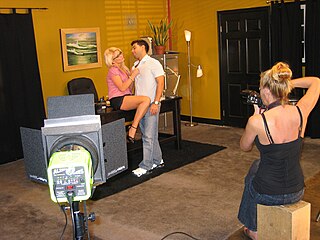
Pornographic films (pornos), erotic films, or sex films are films that present sexually explicit subject matter in order to arouse and satisfy the viewer. Pornographic films present sexual fantasies and usually include erotically stimulating material such as nudity (softcore) and sexual intercourse (hardcore). A distinction is sometimes made between "erotic" and "pornographic" films on the basis that the latter category contains more explicit sexuality, and focuses more on arousal than storytelling, but the distinction is highly subjective.

Alice Ida Antoinette Guy-Blaché was a French pioneer filmmaker, active from the late 19th century, and one of the first to make a narrative fiction film. She was the first woman to direct a film. From 1896 to 1906, she was probably the only female filmmaker in the world. She experimented with Gaumont's Chronophone sync-sound system, and with color-tinting, interracial casting, and special effects.
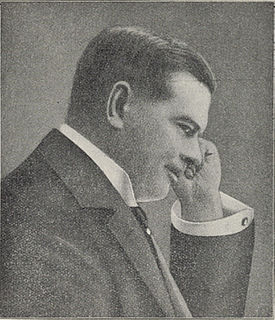
Charles Urban was an Anglo-American film producer and distributor, and one of the most significant figures in British cinema before the First World War. He was a pioneer of the documentary, educational, propaganda and scientific film, as well as being the producer of the world's first successful motion picture colour system.
The Warwick Trading Company was a British film production and distribution company, which operated between 1898 and 1915.

Charlotte Lucie Marie Adèle Stephanie Adrienne Faës, known by her stage name Jeanne d'Alcy or Jehanne d'Alcy, was a French film actress. She was the wife of French cinema pioneer Georges Méliès from 1925 until his death in 1938.

Peter Elfelt was a Danish photographer and film director known as the first movie pioneer in Denmark when he began making documentary films in 1897.
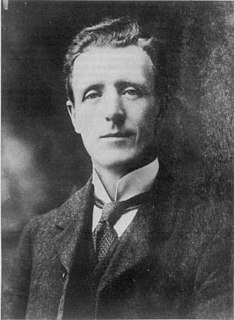
Alfred John West (1857–1937) was a British award-winning marine photographer in the Gosport firm of G. West and Sons from 1881 and from 1897 at the age of 40, a pioneer cinematographer. He was then active in both roles until 1913 when he sold his copyright in negative plates of yachting studies to Beken of Cowes, and his stock of positive moving film in 1916 to a distributor, James Joseph Bennell, proprietor of: B. B. FILM HIRING SERVICE, 81, Dunlop Street, in Glasgow On the closure of the business, the film stock was then sold onwards to the 'Argosy Film Co. Ltd' in 1917 a company also registered at 81 Dunlop Street on 2 August 1917 which was in film business through the 1920's but was liquidated in 1930, the business passing to 'Audible Filmcraft' which was itself wound up in 1931. It is believed that the positive film stock was transferred from West to B.B. Hiring without completing the purchase.

Walter Robert Booth was a British magician and early pioneer of British film working first for Robert W. Paul and then Charles Urban mostly on "trick" films, where he pioneered techniques that led to what has been described as the first British animated film, The Hand of the Artist (1906).
Orizaba George Perry, better known as Orrie Perry, was an Australian cinematographer who worked for Amalgamated Pictures. He was the son of Australian film pioneer Joseph Perry. Perry had a long career in the Australian film industry.
Albert Kirchner (1860–1902), better known under the pseudonym Léar, was a French photographer, manufacturer, exhibitor, and filmmaker who is noted for producing several religious and erotic films. He was employed by Eugène Pirou, a French filmmaker and photographer. Kirchner directed the first known erotic film, 1896 Le coucher de la mariée, that featured actress Louise Willy.
Lewin "Fitz" Fitzhamon was a British filmmaker, who worked as Cecil Hepworth's principal director in the early decades of the twentieth century. His best-known film is Rescued by Rover (1905). Other directing credits include An Englishman Trip to Paris from London (1904), That Fatal Sneeze (1907), The Man and his Bottle (1908) and A New Hat for Nothing (1910). In total, he directed around 400 films.
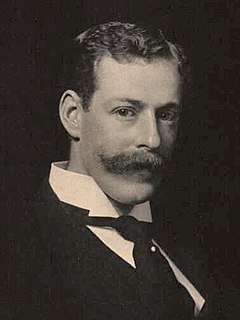
Henry Walter Barnett, usually known as H. Walter Barnett, was an Australian photographer and filmmaker. Barnett was a prominent portrait photographer of the late 19th and early 20th centuries, establishing the successful Falk studios in Sydney. Later in his career he was based in London, England, with studios at Hyde Park Corner and Knightsbridge. Barnett became involved in filmmaking after meeting cinematographer Marius Sestier in 1896, and with Sestier made some of the first films shot in Australia.

Joseph Henry Perry was an English-born New Zealander cinematographer, entrepreneur and Salvation Army officer. Born to Joseph Perry Sr. and Eliza Hall, his sons Orizaba, Reginald and Stanley also went on to have careers in the Australian film industry.
Britain Prepared (1915) is a British documentary feature film. The film is silent and made in black-and-white with some colour sequences in the Kinemacolor additive color process.
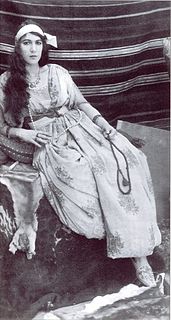
Haydée Samama Chikly Tamzali was a Tunisian actress, writer, and filmmaker, considered the first woman screenwriter in Africa.

Laura Eugenia Bayley was a British actress and filmmaker, active in the Brighton School of early cinema pioneers. Born in Ramsgate, Bayley performed onstage in Victorian burlesques, revues, and pantomimes, often with her three sisters. After marrying the showman George Albert Smith, she entered the world of early experiments with motion picture film; she played main roles in many of the most important films Smith made between 1897 and 1903, including The Kiss in the Tunnel (1899) and Mary Jane's Mishap (1903).
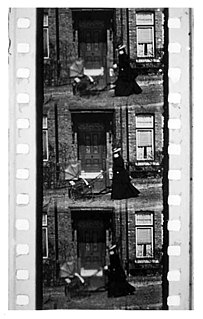
Incident at Clovelly Cottage, also known as Incident Outside Clovelly Cottage, Barnet, shot by Birt Acres and produced by Acres and his collaborator Robert W. Paul in March 1895, was the "first successful motion picture film made in Britain".
Henrietta Elizabeth Spiers was a British costume designer for the theatre and silent films, a screenwriter, and an author. Columbia University's Women Film Pioneers Project counts her among those on its list of 'Unhistoricized Women Film Pioneers'.
D. Devant, Conjurer was a 1897 French short silent film by Georges Méliès, starring the magician David Devant.
References
- ↑ "British Cinema". The Independent. March 20, 2005.
... they'll also be delighted by Stephen Herbert and Luke McKernan's 'Who's Who of Victorian Cinema' - A treasure box of short biographical essays on the medium's ...
- ↑ "Who's Who of Victorian Cinema". Intute . Retrieved 2007-09-25.
This website, the work of two specialists in film history, is a guide to Victorian film, covering the beginnings of filmmaking, from the 1870s until the death of Queen Victoria in 1901.
- ↑ "Victorian film". BoingBoing . Retrieved 2007-09-25.
Who's Who of Victorian Cinema is a comprehensive collection of obscure info about filmmaking at the end of the 19th century.
- ↑ McKernan, Luke (2020-12-29). "Farewell the trumpets". Luke McKernan. Retrieved 2020-12-29.